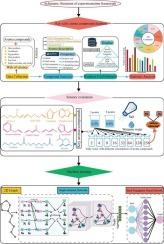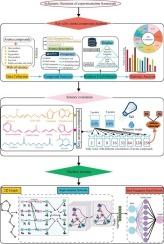通过建立数据库、感官评价和深度学习等方法,咸味有效地增强了气味的筛选和预测
IF 9.8
1区 农林科学
Q1 CHEMISTRY, APPLIED
引用次数: 0
摘要
嗅觉-味觉交互作用在增强咸味感知方面取得了成功。本工作旨在提供候选的咸味增强剂。系统分析了含盐食品中挥发性成分及其频率。频率较高的化合物被纳入芳香化合物数据库。在3.00 g/L NaCl溶液中,通过感官评价检测代表性香气化合物的增咸浓度。采用基于自引用嵌入式字符串的表示学习和图注意网络结合反向传播神经网络分类器来预测气味剂的咸味增强能力。结果表明,酮类、吡嗪类和含硫化合物具有较高的增盐能力。蘑菇和脂肪属性对化合物的增盐能力有贡献。深度学习模型具有良好的泛化能力和准确率(95.93 %),为风味化合物的快速筛选提供了方法。本研究将为食品工业实现减盐目标提供新的途径。本文章由计算机程序翻译,如有差异,请以英文原文为准。


Effectively saltiness enhanced odorants screening and prediction by database establish, sensory evaluation and deep learning method
Odor-taste interaction has gained success in enhancing saltiness perception. This work aimed to provide candidate odorants for saltiness enhancement. Volatile compounds and their frequencies in salty foods were systematically analyzed. The compounds with higher frequency were incorporated into the savory aroma compounds database. The saltiness enhancement concentrations of representative aroma compounds at the NaCl solution (3.00 g/L) were detected by sensory evaluation. SELF-referencing Embedded Strings-based representation leaning and graph attention network combined with Backpropagation Neural Network classifier was utilized to predict the saltiness-enhancing ability of odorants. Results showed that ketones, pyrazine and sulfur-containing compounds showed higher saltiness-enhancing ability. Mushroom and fatty attributes contributed to the saltiness-enhancing ability of aroma compounds. Deep learning model showed excellent generalization ability and accuracy (95.93 %), which provided rapid screening method for selecting savory aroma compounds. This study would provide new pathways for food industry to achieve salt reduction goals.
求助全文
通过发布文献求助,成功后即可免费获取论文全文。
去求助
来源期刊

Food Chemistry
工程技术-食品科技
CiteScore
16.30
自引率
10.20%
发文量
3130
审稿时长
122 days
期刊介绍:
Food Chemistry publishes original research papers dealing with the advancement of the chemistry and biochemistry of foods or the analytical methods/ approach used. All papers should focus on the novelty of the research carried out.
 求助内容:
求助内容: 应助结果提醒方式:
应助结果提醒方式:


